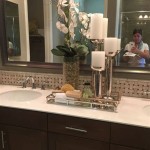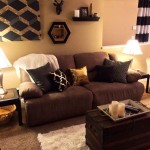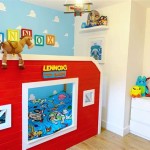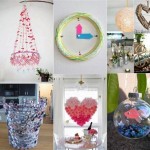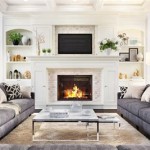Moroccan Style Bedroom Decorating Ideas
The allure of Moroccan design lies in its rich history and vibrant aesthetics. Evoking a sense of exoticism and luxury, a Moroccan-style bedroom offers a unique sanctuary that transcends the ordinary. This article will explore key elements and design principles that contribute to creating an authentic and captivating Moroccan-inspired bedroom.
The Importance of Color and Texture
Color plays a crucial role in defining the atmosphere of a Moroccan bedroom. Deep, saturated hues like jewel tones – sapphire blues, emerald greens, ruby reds, and amethyst purples – are commonly used. These colors are often inspired by the landscapes of the region, from the vibrant marketplaces to the tranquil oases. Gold and silver accents add a touch of opulence and reflect light, enhancing the overall richness of the space. Terracotta tones, reminiscent of the desert sands, provide a grounding element and create a sense of warmth.
Beyond color, texture is paramount in achieving an authentic Moroccan aesthetic. Fabrics with intricate patterns and rich textures are essential. Consider incorporating silk, velvet, and linen in various forms, such as bedding, curtains, and throw pillows. Embroidered details, such as geometric patterns or floral motifs, add depth and visual interest. Tactile elements, such as woven rugs and hand-hammered metal accents, contribute to the overall sensory experience, creating a space that is both visually appealing and physically inviting.
The layering of textiles is another key technique. Draping fabrics over furniture, layering rugs on the floor, and incorporating a variety of cushions and pillows creates a sense of depth and comfort. This layered approach also allows for the incorporation of diverse patterns and textures, adding to the overall complexity and visual richness of the room. Color palettes should be balanced, ensuring that the vibrant hues are tempered with neutral tones to prevent the space from feeling overwhelming.
Key Furniture Elements and Layout Considerations
The furniture in a Moroccan-style bedroom emphasizes comfort and relaxation. Low-slung seating is common, often featuring plush cushions and intricate detailing. A statement bed with a carved headboard or canopy is a central element, creating a focal point in the room. Bed frames made from dark wood or wrought iron are frequently used, adding to the overall exotic feel. The bed should be generously adorned with pillows and blankets in various textures and colors.
Seating areas, such as low couches or cushioned benches, offer a space for relaxation and socializing. These areas are often complemented by small tables, perfect for holding tea or decorative objects. Intricately carved wooden screens or panels can be used to create a sense of privacy and define different areas within the room. These screens can also add a decorative element, casting shadows and adding to the overall ambiance.
Storage solutions should be both functional and aesthetically pleasing. Ornate chests and cabinets with intricate carvings provide ample storage space while also contributing to the overall design. Mirrors, particularly those with decorative frames, are also commonly used to enhance the sense of space and reflect light. The layout of the room should encourage a sense of flow and relaxation. Avoid clutter and ensure that furniture is arranged in a way that promotes comfort and ease of movement.
Traditional Moroccan bedrooms often feature a low, centered platform bed. This design contributes to a more intimate and grounded atmosphere. Lighting fixtures, such as lanterns and sconces, should be strategically placed to create a soft and diffused light, further enhancing the sense of tranquility. The overall effect should be a space that is both visually stunning and deeply relaxing.
Incorporating Authentic Moroccan Details
To truly capture the essence of Moroccan design, it is essential to incorporate authentic details that reflect the region's rich cultural heritage. Intricate geometric patterns, known as zellij, are a hallmark of Moroccan architecture and can be incorporated into the bedroom through tiles, mosaics, or even stenciled designs on walls. These patterns often feature complex interlocking shapes and vibrant colors, adding a sense of visual complexity and sophistication.
Moroccan lanterns and lighting fixtures are another essential element. These lanterns are typically made from metal, often brass or copper, and feature intricate perforations that cast beautiful patterns of light and shadow. They can be suspended from the ceiling, placed on tables, or mounted on walls to create a warm and inviting ambiance. Sconces with filigree designs provide soft, indirect lighting that enhances the overall mood of the room.
Accessories play a vital role in completing the Moroccan-inspired bedroom. Consider incorporating items such as hand-painted ceramics, ornate tea sets, and decorative trays made from metal or wood. Incense burners and essential oil diffusers can add a sensory element, filling the room with fragrant aromas that evoke the exotic atmosphere of Morocco. Plants, such as ferns or orchids, can also be used to add a touch of natural beauty and freshness to the space.
Archways and niches are architectural elements that can further enhance the Moroccan feel of the room. These features can be incorporated into the design of the walls or headboard, adding depth and visual interest. Using patterned wallpaper to define these niches adds another layer of depth and intrigue, highlighting the architectural detail while simultaneously enhancing the overall style.
Pay attention to the details. Small touches, such as tassels on cushions, beaded curtains, and decorative mirrors, can make a significant difference in creating an authentic and immersive experience. Ultimately, the goal is to create a space that is both visually stunning and deeply comfortable, reflecting the rich cultural heritage and timeless beauty of Moroccan design.
A critical element is the absence of overtly modern or minimalist elements. While incorporating some modern comforts is acceptable, the overall aesthetic should remain firmly rooted in traditional Moroccan design principles. Avoiding stark contrasts and clean lines is crucial to maintaining the intended atmosphere.

Moroccan Bedrooms Ideas Photos Decor And Inspirations

Moroccan Interior Design Ideas For Your Home Designcafe

Amazing Moroccan Bedroom Ideas Bold Colors And Ornate Accessories

19 Moroccan Bedroom Decoration Ideas Innenarchitektur Wohimmer Schlafzimmer Design Ideen Wohnung

70 Mysterious Moroccan Bedroom Designs Digsdigs

Moroccan Interior Design Ideas For Your Home Designcafe

Decorate Your Bedroom Moroccan Style L Esseiale

Moroccan Bedrooms Ideas Photos Decor And Inspirations

20 Moroccan Bedroom Ideas

20 Moroccan Bedroom Ideas
